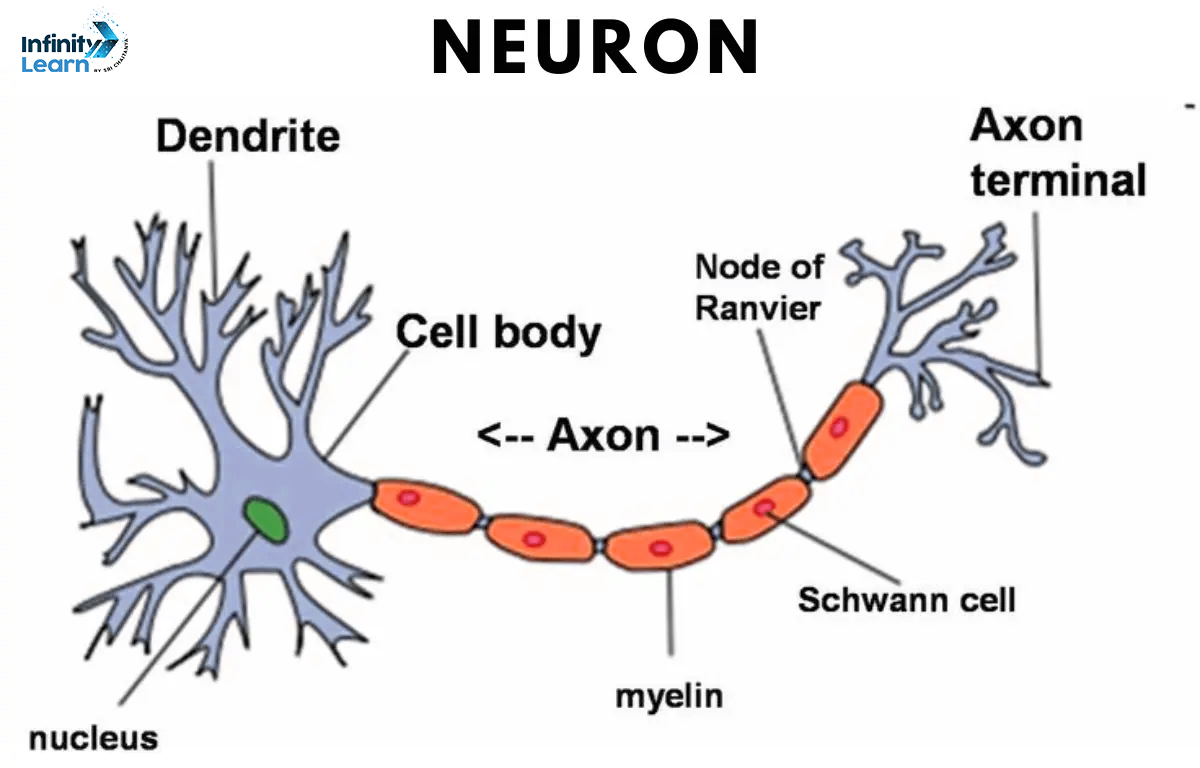
Courses

By Shailendra Singh
|
Updated on 3 Jun 2025, 15:03 IST
Neuron Diagram Class 9: The neuron is a fundamental component of the nervous system. It plays a vital role in transmitting signals throughout the body. Understanding the neuron diagram is essential for success in class 9 exams. Below is a labeled diagram with explanations to assist you in achieving top marks.
Neurons are the fundamental units of the nervous system, responsible for transmitting and processing information. These specialized cells consist of three main parts: the cell body, dendrites, and an axon. Together, they form an intricate network throughout our body, enabling functions like thinking, perception, and bodily movements.
Neurons play a vital role in both the central nervous system, which includes the brain and spinal cord, and the peripheral nervous system, governing sensory experiences and motor abilities. Check for difference between Sensory and Motor Neurons
Studying neurons is crucial for understanding the complexities of the brain and how it influences our cognition and behavior. In humans, there are three primary types of neurons: sensory neurons, motor neurons, and interneurons, each serving specific functions in the nervous system.
Don’t Miss

Structure of Neurons:

Functions of Neurons:
A neuron has several important parts:
Class 9 students gearing up for their exams should prioritize practicing the neuron diagram, as it holds paramount importance in the exam structure. This diagram serves as a fundamental cornerstone in understanding the complexities of the nervous system. By familiarizing themselves with its intricacies, students not only enhance their grasp of biological concepts but also develop critical analytical skills necessary for success in the examination

In biology class 9, a neuron refers to a specialized cell in the nervous system responsible for transmitting information throughout the body.
A neuron diagram is a visual representation of the structure of a neuron, typically illustrating its various components such as the cell body, dendrites, axon, and synaptic terminals.
In class 9, chapter 6, a neuron typically appears as a cell with a cell body, multiple dendrites branching out, and a single axon extending from the cell body.
The neuron structure described in NCERT (National Council of Educational Research and Training) typically includes the cell body, dendrites (receiving ends), axon (transmitting end), and synaptic terminals (connections with other neurons).
Neurons can be classified based on polarity into three types: unipolar neurons, bipolar neurons, and multipolar neurons.